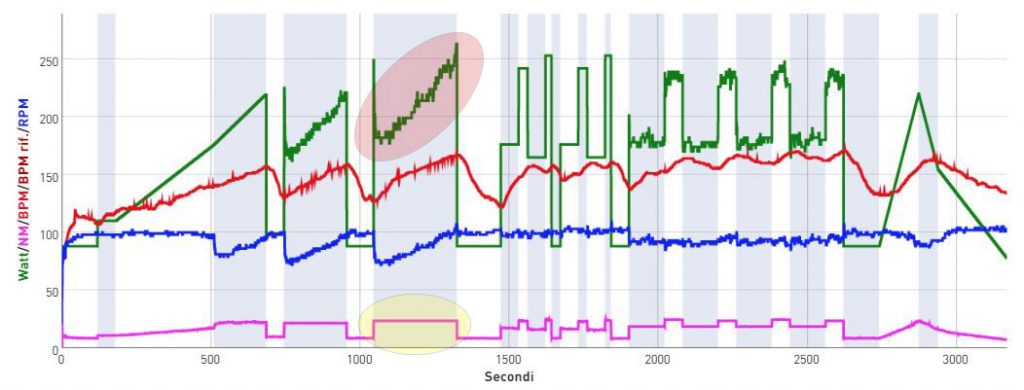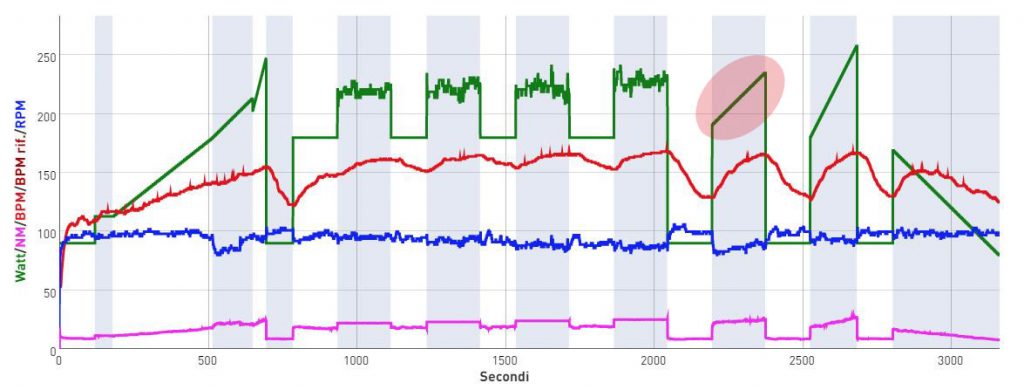The first goal of MagneticDays is to constantly develop a high quality methodology of training for a great outdoor cycling experience. So, we are happy to introduce FORZA PURA, the new concept of pedal cranks for a new cycling experience.
Forza Pura pedal cranks can be used in a totally “independent way” from the bottom bracket. What does it mean? Independent means one leg cannot help the other in making the pedals go around and in order to pedal the bike one cannot simply relax on the back stroke but must actively raise the pedal using your hip flexor and hamstring muscles, generally undertrained muscles in most athletes. Forza Pura are very easy to use, in indoor and outdoor, and are be able to improve significantly all the phases of the pedal cycle, preventing many of the injuries that occur from a wrong way to pedal with more benefits in terms of effort reduction. Forza Pura is a mix of technology and innovation at the service of a large list of sports activities: cycling, triathlon, mtbiking, cyclo-cross, running, swimming, walking and cycle tourism.
Forza Pura pedal cranks represents a real evolution in terms of pedal efficiency and technique, because all the muscle groups are involved in the pedal cycle and specifically trained. With Forza Pura we’ve redesigned the concept and features of the classic pedal cranks with the goal to give you a new and reliable cycling outdoor experience.
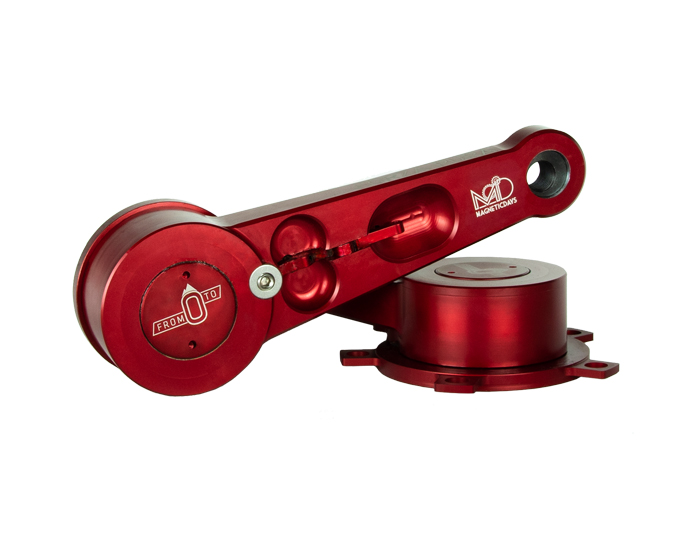
FORZA PURA pedal cranks: technical and innovative features, and precision mechanics
Technical and innovative features, and precision mechanics are the core of FORZA PURA pedal cranks, that are obtained from a slab of aluminum 70/75 t6 (500x500x35mm), normally used for aerospace, military, and automotive applications. 70/75 t6 is the strongest aluminum, with the strength of many steels, while retaining aluminum’s lightweight qualities and corrosion resistance. Both sides are worked with the high precision CNC (computer numerical control) turning process in a first time, and with anoziding process in a second time (essential to ensure the high quality to the product). The last stage is represented by the “handmade assembly” of all the mechanical components of Forza Pura. The strong points of FORZA PURA pedal cranks are:
1) 100% compatibility with any frame and bottom brackets
2) three lenghts: 170 mm, 172,5 mm or 175 mm;
3) the innovative lock/unlock Fast&Easy system that allows to release each crank from the bottom bracket by a little lever, switching from lock to unlock modality quickly and in complete safety.
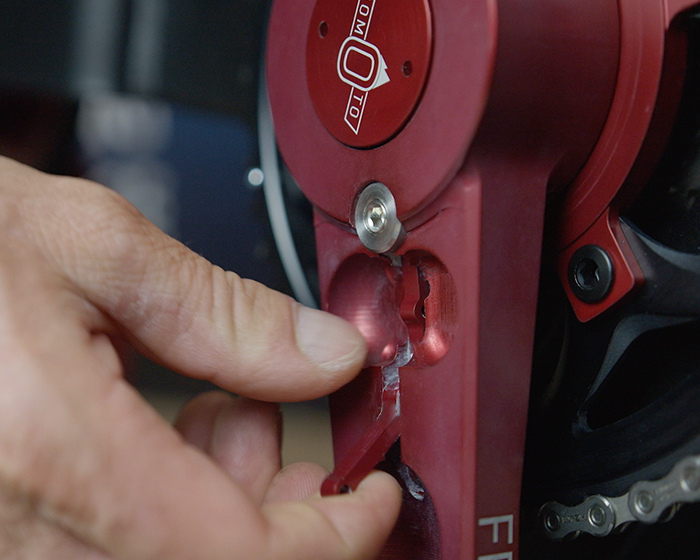
Use of FORZA PURA pedal cranks in the sports activities
Forza Pura pedal cranks can be used in every sport or rehab need puts different demands on the person and every person is different in goals, needs, and genetic make-up. Regarding the benefits Forza Pura might offer you an improvement of running/cycling /speed/power and increase of VO2max, and a reduction of risk of injury in the athlete. Many sports activities, beyond the obvious cycling, running, triathlon can benefit from Forza Pura pedal cranks. It simply requires using the product to train the weaknesses of the athlete for the demands of the sport that the product can address: for example, winter sports, strenght, throwing, speed, swimming and gym. Even some non-athletic needs can be enhanced: for example, the reducing fall risk in the elderly, enhancing the weight loss potential of exercise, and maximizing the abilities of those with cerebral palsy. How long does it take to see benefit? It depends upon your current level and weaknesses. Technique improvement does not come easily and everyone is different. However, most new users are reporting they are starting to see running improvement starting in about 2 weeks. Cycling improvement usually takes a little longer but most are starting to see improvement in about 4-6 weeks. Take a look to the SPECIAL PROMO that we have thought for you!
A few days ago we released the version 2.9.4 of App MD WiFi, introducing 2 specific new options for the virtual cycling training platforms like Zwift and more. Here are the details.
Relase 2.9.4 App MD WiFi | Delay setting for Optical Remote Control
The first introduction of the release 2.9.4 App MD WiFi is the delay setting for optical remote control (single or double button). This function allows you to set the time that elapses from the moment whend the button (optical remote control) is touched until the moment when the command is sent to JARVIS smart trainer. Previously, this time was equal to 2 seconds. Now it is possible to reduce this time with the chance of you getting a faster response.
Relase 2.9.4 App MD WiFi | Trim setting for Virtual Cycling Training Platforms
The second introduction of App MD WiFi Release 2.9.0 is the Trim setting for Virtual Cycling Training Platforms. It consists in the chance to adjust the resistance of magnetic brake when using the routes. Trim setting has effect EXCLUSIVELY when using the virtual cycling training platforms (like Zwift, Bkool, FulGaz, Rouvy AR and more) in the route mode.
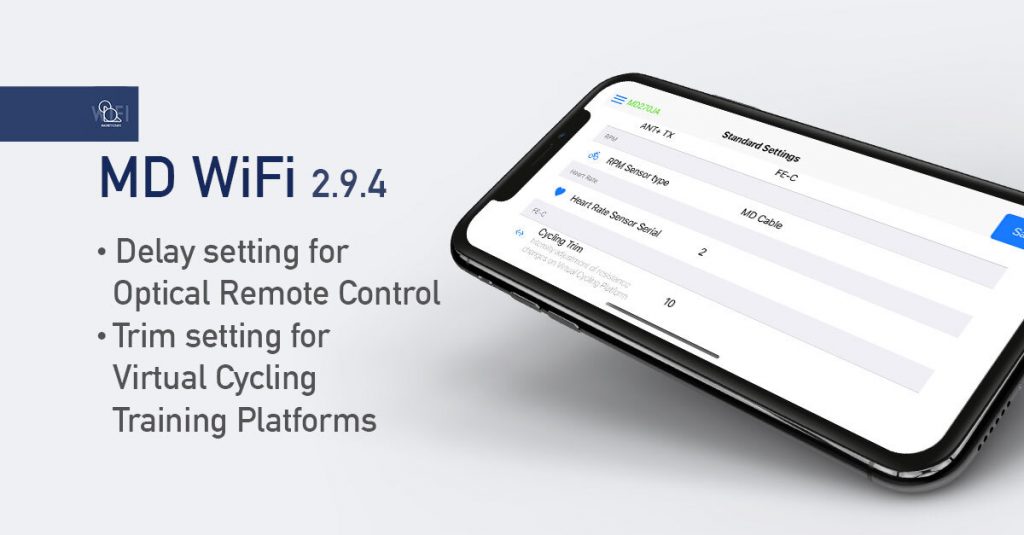
The MagneticDays Head Coach Simone Buracchi introduces another one fundamental cycling exercise of HTT Methodology of Training: HOW TO STIMULATE THE ANAEROBIC THRESHOLD WITH A MD WORKOUT.
“In today’s technical pill, our focus is on two Newton-controlled steps, both lasting 3 minutes and with the same goal: the stimulation of the anaerobic threshold developing the same value of Watts, but in 2 different ways. In the first case (red circle) we are facing a step in agility where the value of newtons are those of the athlete’s threshold but the number of RPM is increased than those at the threshold (93 instead of 90), with the stimulation of the cardio-respiratory system. In the second step of workout (yellow circle) we are facing the opposite situation; the number of RPM at the threshold are the same (90) but the value of the newton increases, with the muscular strenght development.”
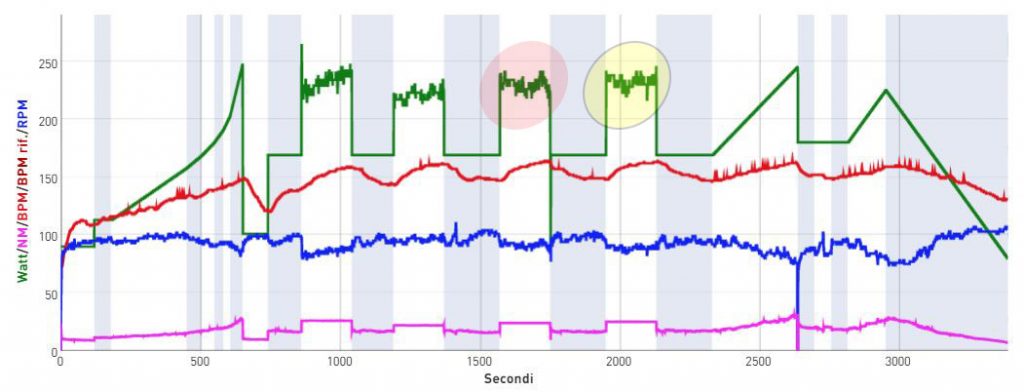
The MagneticDays Head Coach Simone Buracchi introduces another one fundamental cycling exercise of HTT Methodology of Training: THE CYCLING PROGRESSION AT FIXED VALUE OF NEWTON (WITH INCREASE OF WATT + RPM).
“Cadence increases as force (load applied to your pedals) increases, under indoor and outdoor conditions. In this case (as shown in the graph below), pedalling frequency and Watts increase (rec circle) but not the force applied to your pedals (Newton) that remains unvaried (fixed value of Newton at the threshold as shown in the yellow circle). What do we mean when we talk about Cycling Progression at fixed value of Newton? The purpose of this type of cycling exercise (that can only be done with JARVIS smart trainer) is to work separately on Force and Cadence in a focused way. Generally (outdoor conditions), cadence increases (with the same bike gear ratio) of 5 Watts for 1 pedalling that are equally distributed between Newton and RPM. In this case – as shown in the graph below – the value of Newton is fixed and Watts increase of 3 for 1 pedalling. So, the cardio-respiratory system works more than the muscular one if necessary to rebalance these two components.”
The MagneticDays Head Coach Simone Buracchi introduces one of fundamental cycling exercise of HTT Methodology of Training: THE CYCLING PROGRESSION (WATT) FROM MEDIUM THRESHOLD TO THRESHOLD AT THE OPTIMAL RPM.
“The purpose of this type of cycling exercise (red circle in the graph below) is to optimize the relationship between cadence and force, with the goal to increase Bike Power in terms of Watts. The athlete, on the basis of his physiological values, must pedal a progression (in terms of cadence) from 80 RPM (medium threshold) to 90 RPM (at the threshold) with a ratio Watt/Time equal to 1:4. (1 watt each 4 seconds). The aim of this exercise is to investigate the relationship between RPM and Watt. But.. what does cycling progression at the optimal RPM? There is not exist a standard RPM value but exist an ideal value on the basis of the value of watts that the athlete is be able to produce. In this type of progression (and with these values), the athlete starts from his medium threshold (80 RPM) to reach the threshold (90 RPM) with the goal to thus managing to optimize the relationship between cadence and force.”
A few weeks ago we introduced a small change within the MagneticDays AUTOTESTS. But first, let’s remind us all what AUTOTESTS are: autotests or self-tests are incremental test protocols available (free of charge) to all MD customers/users who own an account on our site. They are used to choose the best range of physiological parameters when it comes to writing a workout or riding a Self-Managed Workouts, or simply to know the fitness level after a period of inactivity.
Each MagneticDays AUTOTEST (seven in total) corresponds to an assumed threshold level (processed by an algorithm) and, for each one, both the warm-up and the start of the incremental test will change. What does the change consist of? Until recently, the athlete’s recovery was an active recovery, meaning that after reaching the maximum bearable wattage, the brake opened to give the possibility to recover by pedaling. From today, however, the recovery is passive (yellow area of the graph below), meaning that the athlete recovers “from a standstill” for the entire duration, which is decided by the MD Coach. We defined this as the recovery index, or the ability of the heart to reduce the heart rate at the end of an exercise. The speed with which the heart returns to a low frequency indicates the efficiency of the cardiovascular system. It is believed that the recovery index reflects the reactivation balance of the parasympathetic nervous system and the inhibition of the sympathetic nervous system[1].
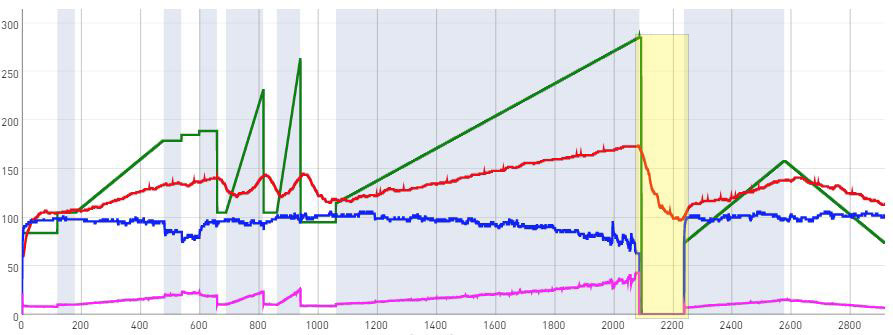
Cells need to rebuild ATP during recovery
It is necessary for cells to rebuild ATP (Adenosine triphosphate) after exertion, and this process takes place during recovery. In the first 10 seconds this is done by the anaerobic alactacid system (the re-synthesis of ATP by means of the creatine phosphate kinase enzyme). Subsequently – up to about 30 seconds – the anaerobic lactacid system is activated (splitting of glucose with production of ATP and lactic acid). From 30 seconds on, the aerobic system is more involved in the recovery.
The three recovery indexes (IDR), described in the report that the MagneticDays Coach sends to the athlete after each training block, indicate the efficiency of the energy systems at the end of a maximum effort, such as an incremental power test. In addition, they indicate the athlete’s resilience in the three areas as well as in general. This allows the MD Coach to calibrate each customized indoor training session, with the relative recoveries studied ad hoc.
The recovery indexes in the MagneticDays report
The recovery indexes highlighted in the MagneticDays report are:
- IRD AA: Anaerobic Alactic Recovery Index, or the ability to resynthesize ATP through the use of the enzyme creatine phosphate kinase (CPK);
- IDR AL: Anaerobic Lactacid Recovery Index, or the ability to resynthesize ATP through the use of anaerobic glycolysis;
- IDR AE: Aerobic Recovery Index, or the ability to resynthesize ATP through the use of the Krebs Cycle;
- IDR GENERAL: GENERAL Recovery Index, or the ability to resynthesize ATP through the use of all three systems.
How to read the recovery index
To read the recovery index, the following must be kept in mind: the number indicated in the report corresponds to the slope of the linear regression line intercepted through the points examined by the MD Coach. A low number corresponds to a poor recovery capacity, conversely, a high number means the athlete has a good recovery capacity. The numbers taken individually are not very useful. To understand whether the personalized indoor training has achieved its effects, it is necessary to compare them with the parameters of a subsequent incremental test. And this is one of the many advantages of the MagneticDays coaching service.
Screen Mirroring is a modality of connection that allows you to switch the App MD WiFi that’s playing on your smaller Android or Apple device to a larger one for a better viewing experience. Here’s how to connect your smartphone or tablet to a monitor or TV (NO PC!) and via HDMI cable. Screen mirroring will help you to view the screen of App MD WiFi in the best way. Are u ready for an incredible training mode with JARVIS smart trainer?
VIRTUAL GEAR and ROUTE are 2 ways to diversify your cycling training plan with MagneticDays JARVIS smart trainer. Here’s the infos.
VIRTUAL GEAR: from the menu of MD WiFi App (Setting –> My Account) you can select the rider and bicycle weight as well as favorite virtual ratio of cogset and cassette, than you can use the buttons +/- shown on the MD WiFi App display (or our optical remote control) during the workout, in order to “replicate the effort” (Watt) required in a specific part of any cycle route. Virtual Gear can be used paired with ZWIFT or in the MagneticDays Time Trial Newton (if this option is enabled by the MD Coach) or in the ROUTE training mode;
ROUTE: in this training mode you have the possibility to ride on JARVIS System the most famous cycle route in the world (or your personal cycle route) as .tcx or .gpx file imported on your personal profile of our website. For example: the route of IRONMAN KLAGENFURT is represented on the graph below. How can it be used in a smart training session with MagneticDays? This route (180 kilometers) is clearly too much long to ride on a smart trainer, as well as any other router greater than of 35 kilometers, so we thought to give you three advices:
- ROUTE mode can be used in thriathlon, for example, as pieces of 30/40 kilometers (1h / 1h30′) within a T1 (swim + firsts kilometers on the bike) or T2 (last kilometers on the bike + run) simulation;
- you can ride a single piece of the ROUTE with the goal to perceive the muscular adaptations in a specific part of the race;
- a ROUTE (or a part of it) can be used as a long distance training.
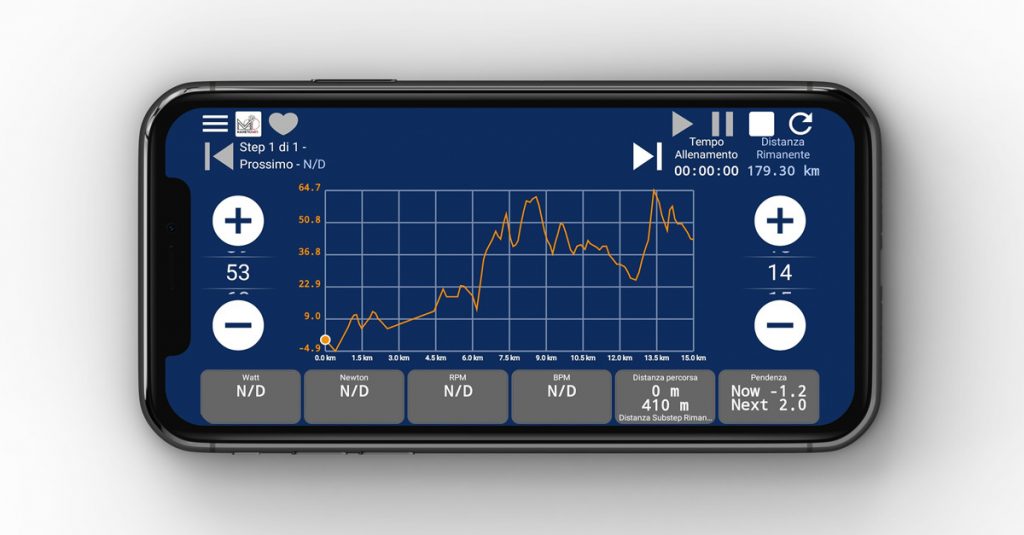
WE’RE BACK!
We’re back to work today after 2 months in smart working. During this time we did our best to make you feel less sad. We are full of enthusiasm and gratitude, in total compliance with the rules for the phase two of this coronavirus pandemic. The sun is shining in Val di Chiana and we wish you all the best. We are here. We have always been there. And we’ll be there every day.
MagneticDays continues to look to the future with hope, optimism and a great desire to start again, perfectly aware to be a resilient family-run business and innovative brand in the same time, constituted by a resistant group of people capable of coping with the unexpected with ingenuity and creativity.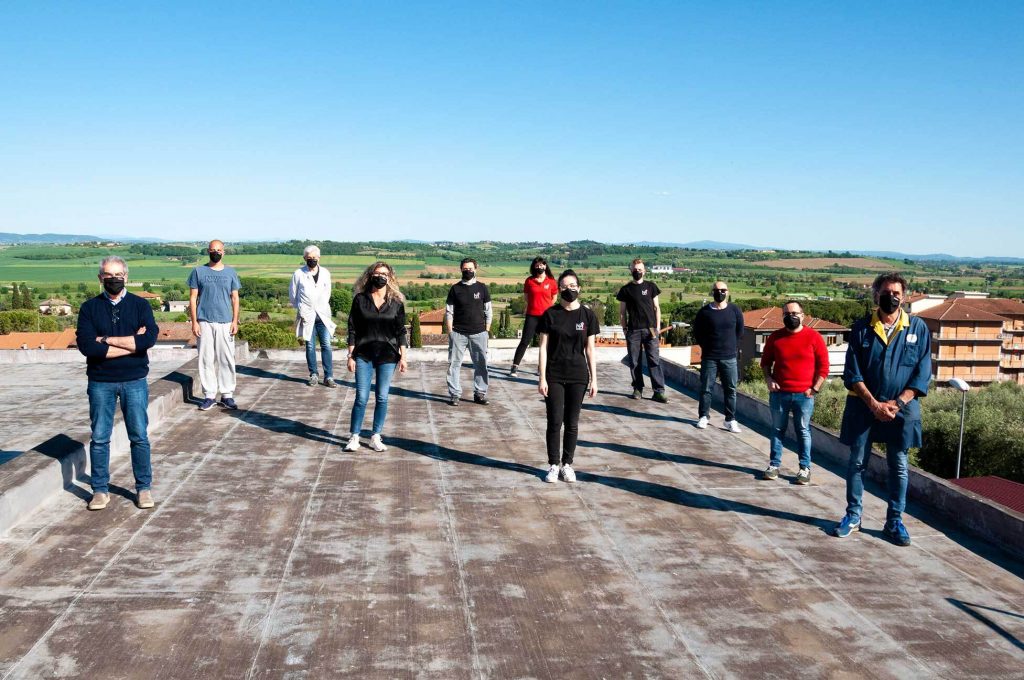
The new firmware update about the compatibility with Bluetooth FTMS protocol is available now on App section of our website. Directions are following.

BEFORE
- JARVIS is compatible with Bluetooh FTMS (only with Zwift and only for iPhone/iPad);
- 4-25 e 6-30 ARE NOT COMPATIBLE with Bluetooth FTMS.
NOW
- JARVIS is compatible with Bluetooth FTMS and all cycling platforms (except Rouvy AR at the moment), for Android and iOS;
- 4-25 e 6-30 ARE NOT COMPATIBLE with Bluetooth FTMS.
FUTURE STEP
- Compatibility with Bluetooth FTMS for all cycling platforms and 4-25 e 6-30 trainers also, for Android and iOS.
Going fast uphill is one of the goals of many cycling, mountain bike and triathlon enthusiasts. The recent lockdown has presented many concerns to all athletes struggling to both keep fit and not lose all the hard work done until the end of February. In the run-up to phase 2, one of the most frequently asked question was: “Will I be able to go uphill as fast as before”?
My answer, short and reassuring, has always been: “Of course, actually, you will go faster”! “But how can I go fast uphill if I don’t pedal uphill”? More often than not was the reply! At this point, I want to share some principles of Physics by providing a detailed answer.
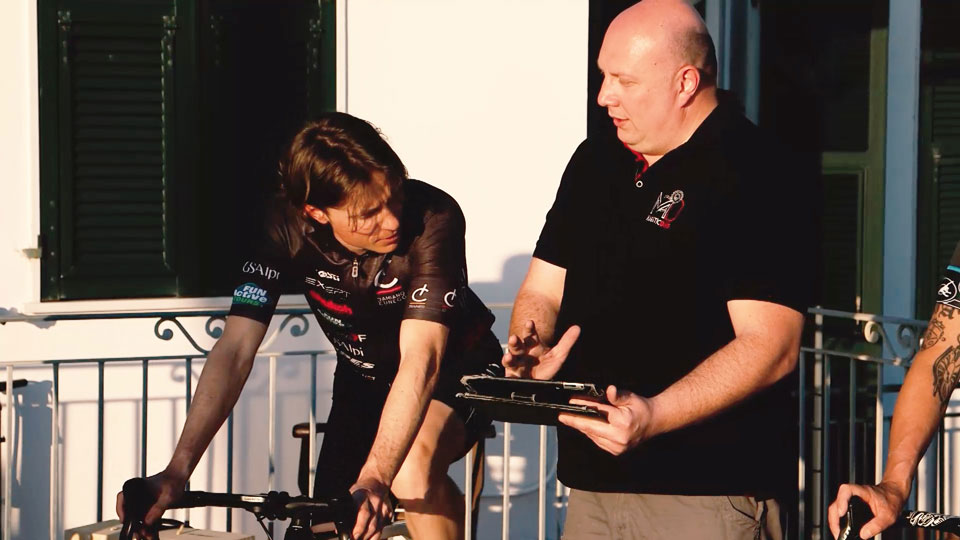
Let’s assume we have an athlete weighing 70 kg and a 7 kg bicycle with an additional 2.2 kg of weight between clothes and water bottles. Uphill, at a speed of 30 km/h, we estimate about 195 Watts. These Watts are used to overcome the resistances (front section, friction and slope being the main ones) and to maintain speed. At the same speed (30 km/h) – with a gradient of 1% – we must supply 261 Watts; at 2% 327 Watts, at 3% 293 Watts. If we want to keep the power constant of about 200 Watts, we must adjust the speed: with a gradient of 1% we will go 26 km/h, 2% 23 km/h, 3% 19.5 km/h. As we can see from these simple calculations, for the same wattage the speed must necessarily change. As previously stated, the three main factors that influence the forward movement are:
a) front section (also called drag), which increases proportionally to the speed;
b) force of gravity (which increases as the slope increases);
c) friction such as that generated by old bearings, deflated wheels or a dirty chain.
In the following table I summarized the numbers shown above with the addition of the gravity and drag factors.
| Slope
(%) |
Speed
(Km/h) |
Power
(Watt) |
Gravity
(% of the total) |
Drag
(% of the total) |
Other
(% of the total) |
| 0 % | 30 | 195 | 0 | 81 | 19 |
| 1 % | 26 | 191 | 30 | 54 | 16 |
| 2 % | 23 | 200 | 50 | 36 | 14 |
| 3 % | 19,5 | 194 | 65 | 23 | 12 |
As you can see, as the slope increases, the influence of gravity increases, while the drag decreases as speed decreases. The 3% gradient is an easily cycled climb for many cyclists. I used the weight of same person (plus gear) as an example, as we know the overall weight of the “cyclist-bicycle-clothes” system affects the weight/power ratio.
Now, going back to the initial question “how to go faster uphill”, there are many recommendations that can be found online, from technical tips to training with various repetitions. However, all these tips have one thing in common: to go fast uphill you need to increase your threshold power.
In normal conditions, in fact, we would do a long uphill at the intensity of the fondo medio, which we know is around 80% of our FTP. If we take our cyclist as an example, he should have a threshold of about 250 Watts. Using a bit of logical reasoning, if we increase the power of the anaerobic threshold by 5%, we go to 262 Watts, which is 210 Watts at 80%. In terms of speed, we are at 20.5 km/h at 3%, that is 1 kilometer per hour more compared to the previous condition. We have improved!
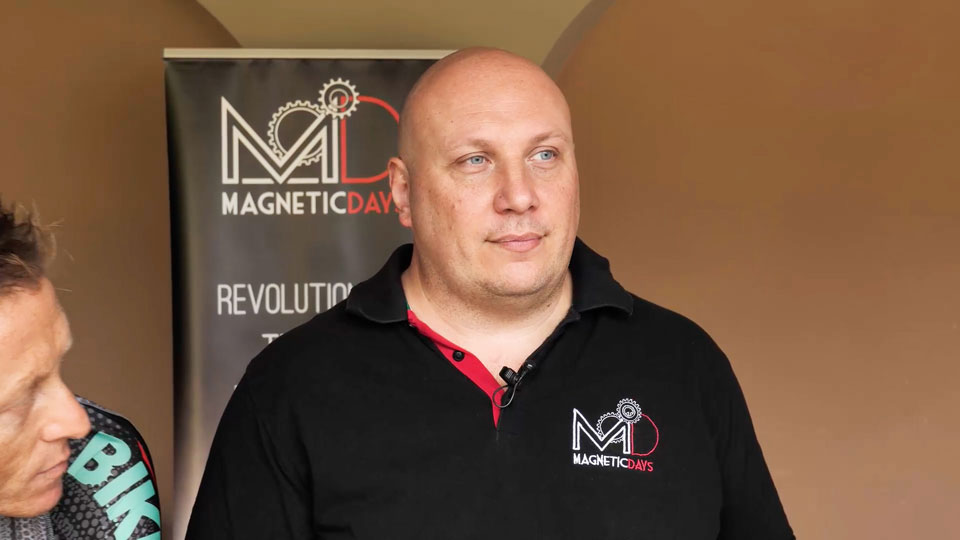
We always need to keep in mind that 200 Watts uphill or 200 Watts on a flat surface are the same. What changes is the speed. So, the opening question should be: “Does it make sense to train uphill to go fast uphill”? I suppose the answer is starting to be clear, but let’s make another consideration. When training with repetitions uphill, you can do shorter or longer repetitions. The intensity will decrease proportionally to the duration of the repetition. When you go below the threshold, the training stimulus is no longer aimed at increasing the threshold power but at being able to last longer. This is also a useful and necessary factor, but performing “al medio” will not reduce your climbing time at all.
To stimulate the body to increase the threshold it is necessary to provide stimuli around and beyond the threshold power, as we do for example at MagneticDays through the customized HTT training methodology expressed on JARVIS smart trainers. The question I ask you now – considering what has been said – is: “Is it therefore possible to go fast uphill with indoor training”? In indoor training we have 8+1 advantages that help us work on improving FTP. Let’s see them in detail:
- We exclude the limiting factors of performance (force of gravity, drag and various frictions);
- We have an optimal biomechanical efficiency;
- We exclude stopwatches, tables to follow and ideal routes to look for;
- We calibrate the intensities according to our abilities;
- We avoid U-turns in curves and crazy descents to get back into recovery time;
- We have the constant supply of working power and the consequent optimization of the cadence;
- We have the optimization of training times;
- We challenge our teammates on Sunday instead of thinking about repetitions;
- HTT protocols are personalized workouts aimed at improving performance and well-being.
In conclusion, I ask you: “Do you have to go uphill to go uphill”? Personally I am convinced that we must work on improving the individual performance, using an ideal training method and having patience and confidence for at least three weeks, which is the minimum time to appreciate the results. Then, if you want, nothing (but further lockdowns!) prevents you from getting on your bike and going to train uphill.
PS: The calculation of the weight / power ratio (the famous Watt/Kg of body weight), are included in the category “force of gravity”. When you are outdoors, it is MANDATORY to calculate the body weight of your clothes before going out and add it to the weight of the bicycle with full bottles. That is, in fact, the overall weight when riding outdoors. In indoor training, the force of gravity is zero, so you just need to do the division using your won weight, and nothing more.
In this historic moment, with the world pandemic and all the associated limitations, many people are dedicating more time to indoor cycling. Sports help you fill your days, strengthen your body and your mind, optimize your time and keep yourself in good health. However, some people are beginning to show signs of impatience with the restrictions, and this impatience also turns into a hyperkinesia (an increase in muscular activity that can result in excessive normal or abnormal movements) in terms of training. It is known that sport is addictive and doing without it for a long period of time causes side effects comparable to the ones due to abstinence from substances such as tobacco. The healthy remedy, therefore, is to continue to practice sports, without “overreaching”. Overreaching is what scientists define as an “accumulation of stimuli, whether from training or not, which results in a short-term decrease in performance, with or without signs or related symptoms (physiological or psychological) of a poor adaptation, and where the recovery of performance can take several days or weeks.”
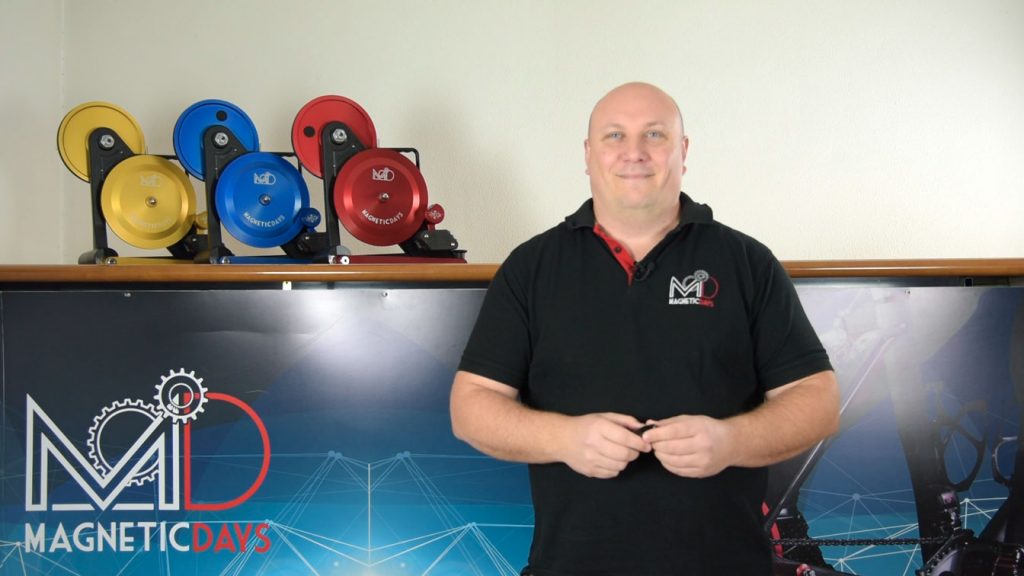
MagneticDays Coach Luca Bianchini offers us an interesting food for thought: “If in a normal day physical activity covers a part of the time, in this particular period in history the percentage of that time increases. The risks produced by an increase in physical activity at home are sometimes unpleasant. The intensity of indoor cycling is certainly greater than the outdoor one and this implies longer recovery times. Excessive sweating leads to a state of chronic dehydration that must necessarily be compensated for. The return to homeostasis is sometimes longer than normal. The first discomforts that are being observed due to the increase in physical activity are latent – continues Coach Bianchini – but they do not go unnoticed to a careful eye. If we used to train 3 or 4 times a week, now we train 7 days a week. Our body is not used to keeping up this rhythm and responds with fatigue. The first organ to give us a signal of this state is the heart. Heart rate struggles to drop adequately during the recovery phase, and stays high even during rest. In maximal efforts, then, it struggles to reach the usual peaks. This is where the use of a valuable tool comes into play: a heart rate monitor. The more advanced ones also provide cardiac variability, data that allows you to evaluate actual recovery. If paying attention to these tools is sometimes underestimated, the lack of serotonin can be stronger stimulant than common sense. If proper attention is not provided to recovery, many people will suffer from chronic overexertion at the end of this period. And this state is the prelude to overtraining, which is a real pathology.“
How to avoid overreaching
Expanding on what Coach Luca Bianchini just talked about, how can you avoid overreaching? And what are the recommended practices? “First of all – continues Coach Bianchini – the variety of training loads: at each high-intensity workout it is necessary to alternate two recovery workouts, in which the heart rate or the reference watts remain under the indications of zone 2 or below 70% of the heart rate threshold. Furthermore, drinking more water than usual, not all at once, but increasing the consumption by at least half a liter (even a liter) throughout the day, is recommended. The body needs water, not only during the indoor cycling session, but also immediately after, and it is even better to add a soluble preparation of salts (magnesium and potassium) and essential amino acids. It is also advisable to take the same supplements right before bedtime, to prevent the onset of nocturnal cramps. It might seem obvious and outdated, but I feel the need to reiterate a concept that I really care about: it is precisely during rest that improvements occur, not during training. Recovery is just as important as training, if not more. Following the instructions of a coach is essential to ensure the correct management of training during the week. If we want to reach the competitive season in the best shape possible, we need to use our head, not only our legs.”











